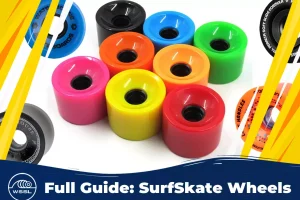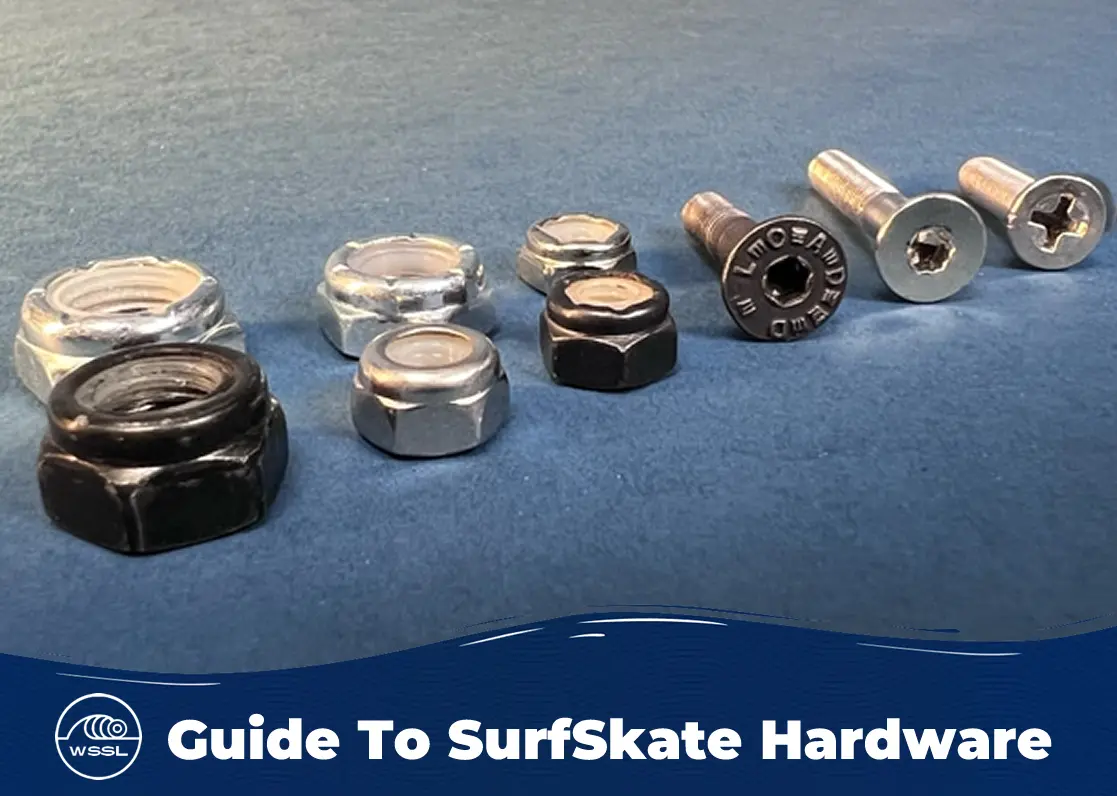
Guide To SurfSkate Hardware
- Categories Reviews
- Date May 2, 2024
Guide To SurfSkate Hardware
From the origins of skateboarding to current surfsimulators, indeed, hardware has always been tied to the evolution of the sport!
Whether in terms of design, lightweight, technology, or responsiveness, surfsimulators equipped with top-quality hardware provide athletes with the ability to explore more radical maneuvers.
So, if you want to enhance your surfskate hardware, you’ve come to the right place!
In this article, we will explore the main differences between hardware materials and teach you how to turn your surfsimulator into a real rocket through meticulous details. Check it out!
Nut Sizes for SurfSimulator
The nuts for surfsimulators can come in a variety of sizes, each serving a specific purpose to ensure optimal performance and safety.
It is imperative to use nyloc nuts on all components to prevent loosening during surfing sessions.
Nut Types

10-32 (Baseplates)
The smallest nuts, designed for baseplates, play a crucial role in securely mounting the trucks to the deck, providing stability and control during maneuvers.5/16″ (Wheels)
Mid-sized nuts dedicated to wheels serve as the primary fastening mechanism, ensuring wheels remain securely attached to the truck axles, thus facilitating smooth and stable rides.3/8″ (Kingpin)
The largest nuts, intended for kingpins, are pivotal in securing the bushings and enhancing overall responsiveness and maneuverability, allowing riders to execute tricks with precision and confidence.
Screw Sizes for SurfSimulator
The typical screw dimension is 10-32.
10 signifies the standardized measurement established by ANSI B1, while 32 denotes the number of threads (There are 32 threads per inch).
The majority of configurations will employ bolt sizes ranging from 1 to 2 inches. However, if thicker riser pads are utilized, the length may exceed 2 inches.
How to select the appropriate size
Trying to determine the appropriate screw sizes?
An average 7-ply maple deck typically measures 1/2″ in thickness, with truck baseplates adding an additional 1/8″, and nuts approximately 1/4″. Consequently, the combined average setup totals about 7/8″.
Ideally, you’ll want approximately 1/8″ of the bolt protruding so that the nut’s nylon ring can effectively secure to the threads.
Let’s simplify matters; let’s round it up to an inch. Therefore, all you need to do is add 1″ + your riser pad size to determine the correct bolt size.
While measuring your setup is always preferable, this should provide you with a rough estimate.
| Riser Thickness | Hardware Size |
|---|---|
| No riser | 7/8” |
| 1/8” riser | 1 1/8” |
| 1/4” riser | 1 1/4” |
| 1/2” riser | 1 1/2” |
| Riser Thickness | Hardware Size |
|---|---|
| No riser | 1 1/8” |
| 1/8” riser | 1 1/4” |
| 1/4” riser | 1 1/2” |
| 1/2” riser | 2” |
Screw Drive Types for SurfSimulator
The drive type denotes the arrangement employed on the screw head, dictating the type of tool required for installation.
For instance, a Phillips screwdriver is suitable for Phillips bolts, while an allen/hex key is used for socket bolts.
The amount of torque provided varies depending on the pattern of the drive type.
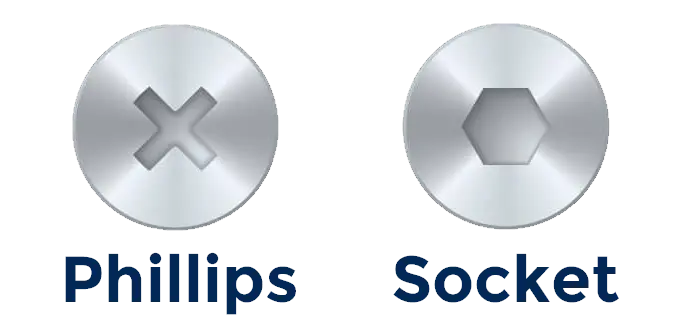
Phillips Pros & Cons
- More common Phillips screwdrivers
- Increased risk of stripping
- Reduced torque
Socket Pros & Cons
- More challenging to locate an allen key
- Reduced risk of stripping
- Greater torque
Screw Head Types for SurfSimulator
Although there are two common types of screw heads: countersunk and button. Always opt for countersunk screws to use in the surfsimulator, as they sit flush with the deck.
On the other hand, button screw heads remain exposed on the deck, which can bother the surfskater during movements for corrections and foot positioning adjustments.
But don’t worry, most surfskate decks come pre-drilled for countersunk screws!

Moreover, if your riding style doesn’t require the screws to be flush, then it doesn’t matter. But if you enjoy barefoot surfskating, you probably won’t want button heads.
Material composition
What would be the best choice: stainless steel or zinc-plated steel screws?
One of the main advantages of stainless steel is its superior corrosion resistance.
However, why not always opt for stainless steel?
Well, first of all, it tends to be more expensive. However, the cost difference isn’t significant when purchasing only eight screws.
One of the main disadvantages of stainless steel is its tendency to seize up due to its malleability. It’s common for stainless steel nuts to seize up, and often the only solution is to cut the screw.
Additionally, there is the risk of the grip tape adhesive mixing with sand and adhering to the screws, which significantly increases the chance of seizing up.
However, this doesn’t mean that stainless steel should be completely discarded. If corrosion resistance is the most important feature for you, a simple solution is to rub a little soap on the screw threads to prevent the nuts from seizing up.
For most people, the most viable option is to use zinc-plated screws with nuts of the same material. This avoids many hassles, especially for those who frequently make changes to the setup. On the other hand, if you often practice in wet conditions, it may be worth investing in stainless steel screws.
And for those who reside and store the surfsimulator near the ocean, stainless steel provides an additional layer of protection against the corrosive effects of salt air.
Conclusion
Most surfskaters opt for stainless steel as they often live or practice surfskating near the ocean, requiring the extra need for rust protection.
Otherwise, use zinc-plated hardware, as it is not only more affordable but also does not require extra locking care when maintaining the surfsimulator.
Tag:hardware, nut, pan, screw, surfskate hardware
Rafael Azevêdo pioneered SurfSkate and developed this new authentic modality in 2014 through hosting championships and social events in Brazil.
He built the legend StreetStyle SurfSkate Park and established the key criteria through WSSL to globally regulate the new surfskate modality.
Full-stack professional in Marketing and Technology, SurfSkate Coach, Content Producer, and CEO of the World SurfSkate League.
You may also like
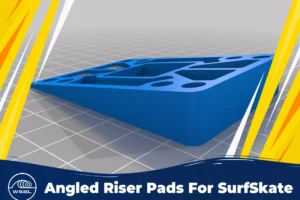
Angled Riser Pads For SurfSkate
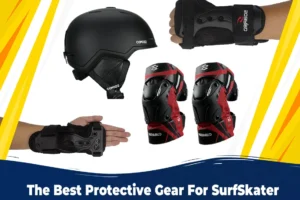
The Best Protective Gear for SurfSkater
